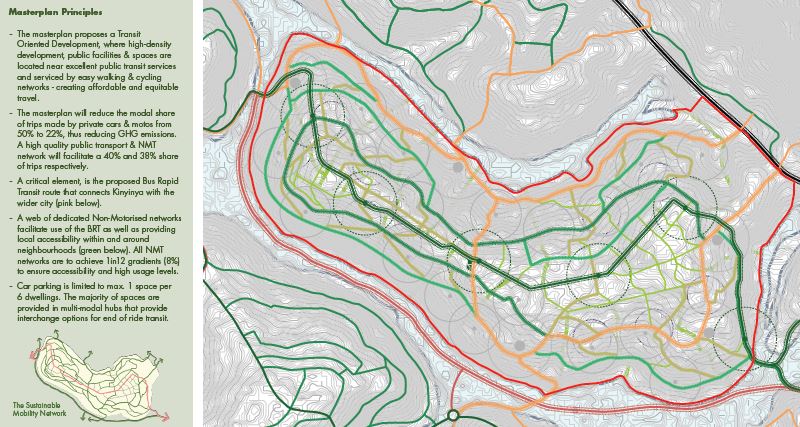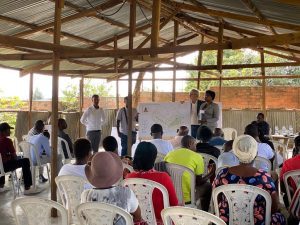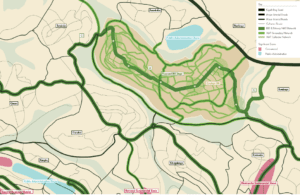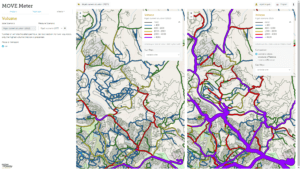
Projects
MOVE Mobility contributed to the Green City Kigali Master Plan
The City of Kigali has recently released the Green City Kigali Concept Master Plan for Kinyinya Hill in Gasabo District, following an extensive review and endorsement process.
Year
2023-2024
Location
Rwanda, Kigali
Client
FONERWA/CGCK Kigali
Partners
-
FCB Studios UK
-
FBW Rwanda Ltd
Team
MOVE Mobility, as a key mobility expert within the consortium, played an essential role in validating the master plan and designing the pilot phase. A challenging task considering the natural topography of Kinyinya Hill with slopes of 1:4 to 1:8. The plan creates a network of accessible streets slicing diagonally across the hill of 1:12 gradients.

The City of Kigali’s Green City Kigali Concept Master Plan for Kinyinya Hill represents a significant commitment to fostering sustainable urban development in Rwanda’s capital. This initiative aims to create an inclusive, affordable, and environmentally friendly urban space, aligning with the broader Kigali Master Plan 2050. The plan is structured around four foundational pillars: affordable and socially equitable development, climate change adaptation and mitigation, resource efficiency, and culturally sensitive urban development. It is based on the existing Kigali Master Plan 2050 and outlines the rationale for the creation of a green city.
A first stage project on a 16-hectare site will be implemented by the Green City Kigali Company and will be composed of a mixed-use neighbourhood that integrates affordable housing, shops, public spaces, and efficient public transport. The remaining area will include essential infrastructure such as roads, blue and green networks, business centres, schools, hospitals, and other vital facilities that will improve the lives of the Kinyinya community without requiring relocation. Construction developments will be required to comply with the regulations of the master plan to achieve a sustainable and climate-resilient city.
The development process heavily involved community engagement, with extensive consultations held in late 2023. Topics covered included public transport (BRT), walking and cycling, and the expected growth of the private car. What are the ideas of the community about connecting neighborhoods with different modes of transportation and with what kind of roads? What does the community view as their priority and how should the interventions be phased?

This participation was crucial in refining the master plan, leading to enhancements such as improved road alignments and the establishment of non-motorized routes for better connectivity. Zoning regulations were also adjusted to promote higher density and mixed-use neighbourhoods, facilitating a more integrated community environment.
The BRT backbone through the whole area is combined with a high-quality cycling network. Dedicated cycling lanes include lanes along collectors and the BRT itself, for example. Another design challenge is comfortable and safe cycling infrastructure as part of the arterials.

We have used our tool Move Meter to develop and visualize the networks for all modes in 2022 and 2035.

At the end of this year, we will continue with the second phase of the project.